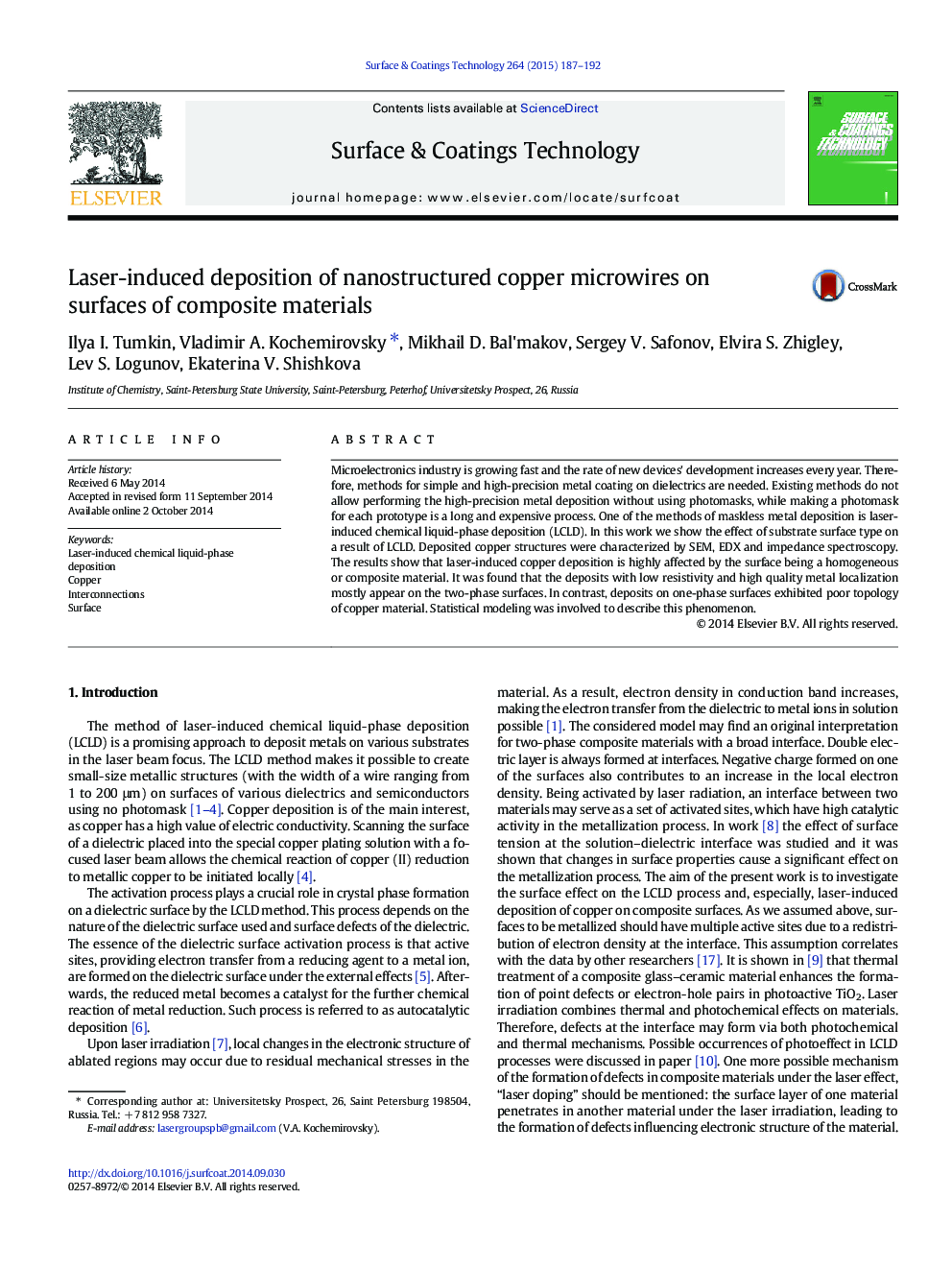| Article ID | Journal | Published Year | Pages | File Type |
|---|---|---|---|---|
| 1657272 | Surface and Coatings Technology | 2015 | 6 Pages |
•Laser-assisted liquid-phase copper deposition is affected by substrate surface type.•Two-phase surface allows depositing conductive copper lines utilizing laser.•Dispersity of defects on interfaces may be described in terms of statistical modeling.
Microelectronics industry is growing fast and the rate of new devices' development increases every year. Therefore, methods for simple and high-precision metal coating on dielectrics are needed. Existing methods do not allow performing the high-precision metal deposition without using photomasks, while making a photomask for each prototype is a long and expensive process. One of the methods of maskless metal deposition is laser-induced chemical liquid-phase deposition (LCLD). In this work we show the effect of substrate surface type on a result of LCLD. Deposited copper structures were characterized by SEM, EDX and impedance spectroscopy. The results show that laser-induced copper deposition is highly affected by the surface being a homogeneous or composite material. It was found that the deposits with low resistivity and high quality metal localization mostly appear on the two-phase surfaces. In contrast, deposits on one-phase surfaces exhibited poor topology of copper material. Statistical modeling was involved to describe this phenomenon.
